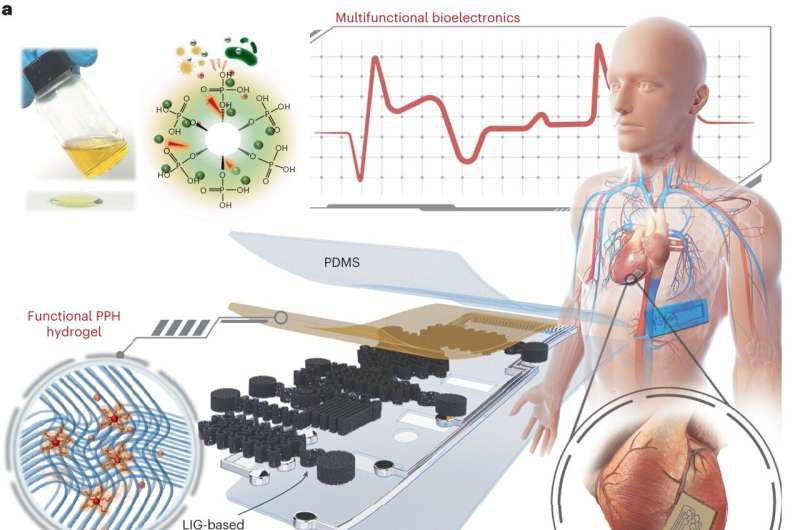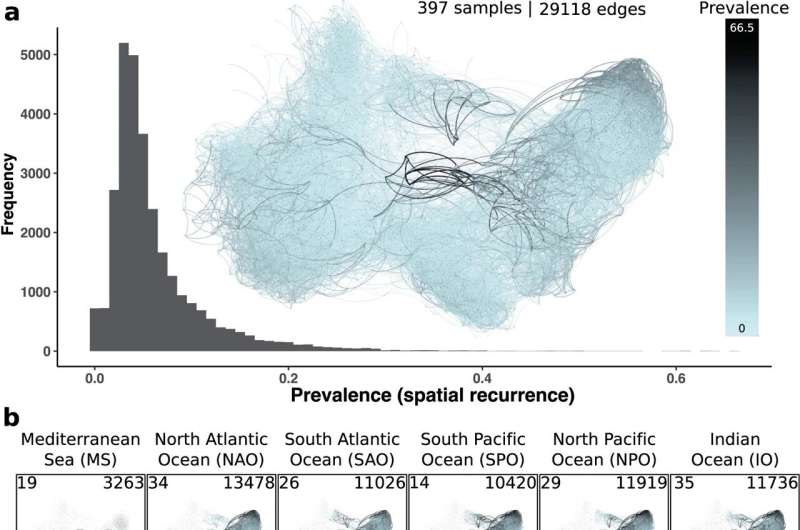JANUARY 11, 2024
Transferring laser-induced graphene at extremely low temperatures for ultrathin bioelectronics

Stretchable and conductive nanocomposites with mechanically soft, thin and biocompatible features play vital roles in developing wearable skin-like devices, smart soft robots and implantable bioelectronics.
Although several design strategies involving surface engineering have been reported to overcome the mechanical mismatch between the brittle electrodes and stretchable polymers, it is still challenging to realize monolithic integration of various components with diverse functionalities using the current ultrathin stretchable conductive nanocomposites. This is attributed to the lack of suitable conductive nanomaterial systems compatible with facile patterning strategies.
Laser-induced graphene (LIG), typically derived from laser irradiation of polyimide (PI), has various distinct merits, such as facile digital patterning processes, compatibility with pattern transfer approaches, as well as tunable physical and chemical features to produce diverse wearable sensors.
However, these multifunctional devices are constructed on flexible PI substrates or relatively thick elastic films owing to the mechanical limitations in transferring LIG to soft elastomers. In addition, the mechanical mismatch between the brittle LIG and elastic polymer hinders the stretchability of conductive nanocomposites.
The authors of the article describe an ultrathin elastic LIG-hydrogel-based nanocomposite for multifunctional on-skin and implantable bioelectronics. A new strategy is proposed to create ultrathin patterned LIG-based nanocomposite, which is formed by cryogenically (77 K) transferring LIG to a hydrogel film (minimum thickness of 1.0 μm). Then the mechanical mismatch between the brittle LIG and elastic polymer, which employs the hydrogel as an energy dissipation interface and out-of-plane electrical path is addressed.
Continuously deflected cracks can be induced in the LIG leading to an over five-fold enhancement in intrinsic stretchability. Overall, this research provides a viable strategy to construct ultrathin carbon-hydrogel-based stretchable nanocomposites for integrated sensor systems, enabling diverse applications in wearable/implantable bioelectronics and human-machine interactions.
Kaichen Xu, corresponding author, noted, "Conventional LIG transfer method requires the much larger thickness (>45 μm) of elastomers or adhesive tapes to provide a strong interfacial force during the peeling-off process, hindering the conformal bioelectronics applications. The mechanical restrictions in transferring LIG to elastomers are overcome by a cryogenic transfer approach at –196℃ using an ultrathin and adhesive polyvinyl alcohol/phytic acid/honey (PPH) hydrogel."
During the fast cooling process, the interfacial binding energy between defective porous graphene and the crystallized water within hydrogel is enhanced, as illustrated by molecular dynamics (MD) calculations. Such a dramatic increase in superficial binding force at 77 K was also captured in the 180° peeling test. The maximum transient peeling force of 160 N m-1 at 77 K was observed, which was much higher than that (<10 N m-1) originating from the autologous adhesion of PPH at the ambient temperature.
Furthermore, the proposed cryogenic transfer strategy allowed the transfer of LIG onto other types of adhesive or non-adhesive hydrogels, indicating the universality of this transfer technology. Nevertheless, only the adhesive hydrogel formed a mechanically stable binding interface, especially under the tensile strain.
Through the facile laser direct writing and cryogenic transfer technique, multimodal sensor components are integrated as a multifunctional wearable sensor sheet for on-skin in vitro monitoring. Furthermore, the ultrathin and biocompatible characteristics of the micropatterned LIG-based nanocomposites allow seamless contact with the heart of Sprague Dawley (SD) rats to in situ track cardiac signals.
More information: Yuyao Lu et al, Stretchable graphene–hydrogel interfaces for wearable and implantable bioelectronics, Nature Electronics (2023). DOI: 10.1038/s41928-023-01091-y
Journal information: Nature Electronics
Provided by Compuscript Ltd
___________________________________________________________________________________
Until now, only the microbial associations in the surface waters of the ocean, at a global scale, have been explored. This study further explores how microbial interactions may change from the surface to deep sea waters across several tropical and subtropical global ocean locations and the Mediterranean Sea.
JANUARY 11, 2024
Scientists uncover ocean's intricate web of microbial interactions across different depths

___________________________________________________________________________________

NASA scientists discover a novel galactic 'fossil'
Researchers at NASA's Goddard Space Flight Center in Greenbelt, Maryland, have discovered X-ray activity that sheds light on the evolution of galaxies.
ASTRONOMY
6 MINUTES AGO
0
0

A princess's psalter recovered? Pieces of a 1,000-year-old manuscript found
A special find has been made in the Alkmaar Regional Archive: A number of 17th-century book bindings contained pieces of parchment from a manuscript from the 11th century. The original manuscript may have belonged to a princess ...
ARCHAEOLOGY
23 MINUTES AGO
0
0

Scientists investigate how heat rises through Europa's ocean
Europa, one of Jupiter's many moons, may be capable of supporting life because its icy surface likely obscures a deep, salty ocean. Europa's ocean is also in direct contact with its mantle rocks, and interactions between ...
PLANETARY SCIENCES
1 MINUTE AGO
0
0

Brazilian semi-arid biome could lose over 90% of mammal species by 2060
The foreseeable effects of climate change on the Caatinga, the semi-arid shrubland and thorn forest biome in Brazil's Northeast region, will be catastrophic for most terrestrial mammal species that live there.
PLANTS & ANIMALS
22 MINUTES AGO
0
0

The first 3D map of magnetic fields in our galaxy explains star-forming regions
A team of astronomers including those from the University of Tokyo have created the first-ever map of magnetic field structures within a spiral arm of our Milky Way galaxy. Previous studies on galactic magnetic fields only ...
ASTRONOMY
1 HOUR AGO
0
5

Patients with rare heart condition given lifeline through new drug
People diagnosed with a life-threatening cardiac condition have been given new hope, thanks to a ground-breaking new drug that protects the heart developed by researchers from UCL and the Royal Free Hospital.
MEDICATIONS
50 MINUTES AGO
0
0

Three-quarters of autistic children also have other types of neurodivergence, finds study
Three quarters of children (76.2%) who were diagnosed with autism also had traits of other neurodivergent neurotypes—including traits associated with Attention Deficit Hyperactivity Disorder (ADHD), learning and motor differences—according ...
AUTISM SPECTRUM DISORDERS
58 MINUTES AGO
0
1

No comments:
Post a Comment